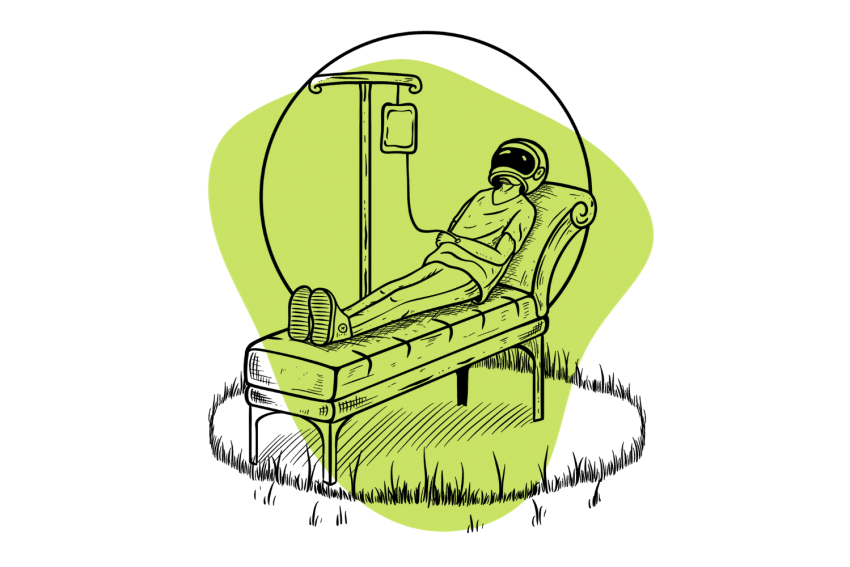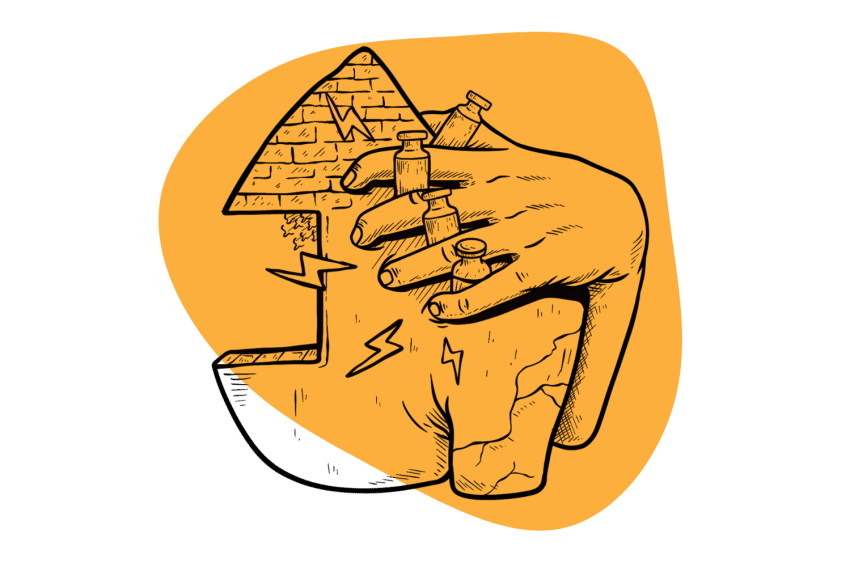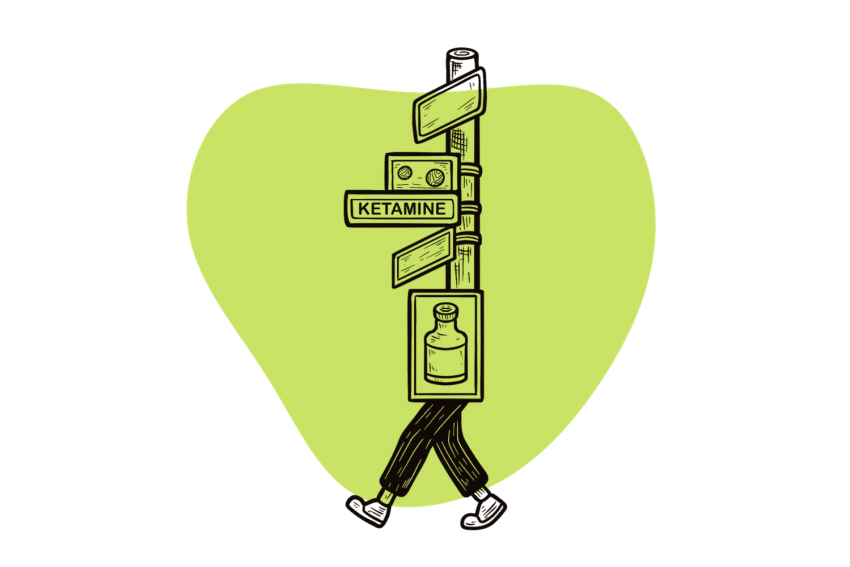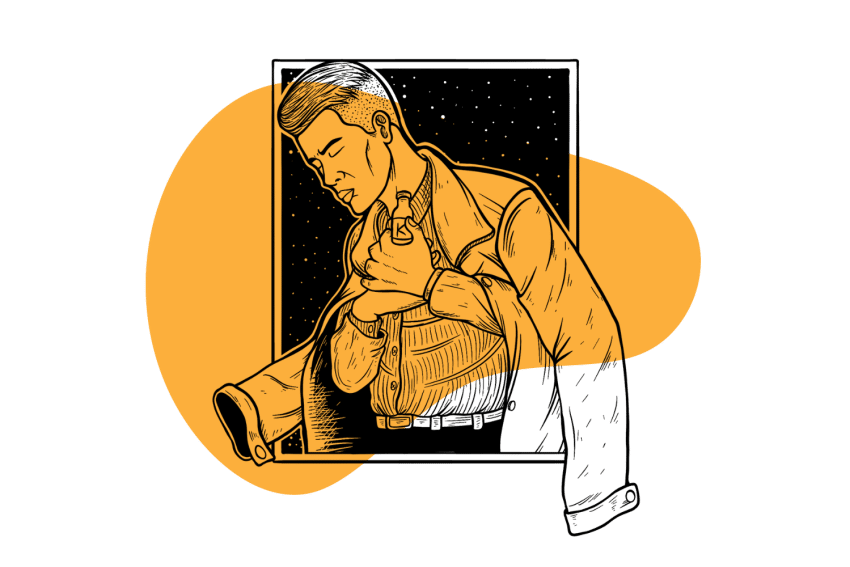Will Ketamine Show Up On A Drug Test? Hair, Urine, & Blood Analysis
Standard 12-panel drug tests screen for opioids, cocaine, marijuana, amphetamines, methamphetamines, PCP (phencyclidine), benzodiazepines, barbiturates, methadone, quaaludes, propoxyphene, and sometimes tricyclic antidepressants — very few test for ketamine.
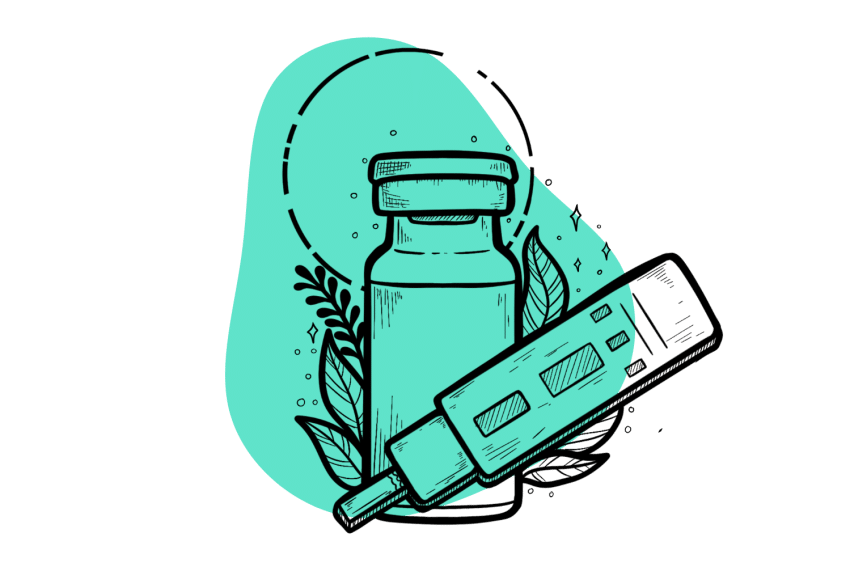
Ketamine isn’t part of standard drug panels, so it won’t show up on a drug test unless an employer is specifically looking for it.
If an employer, parole officer, or regulator suspects ketamine use, they can order special testing of urine, oral swabs, and hair follicle tests.
Each of these tests only works within a specific timeframe since ketamine is cleared from the body relatively quickly. It will appear on urine tests up to 48 hours later and on saliva and blood tests up to 24 hours later.
Hair and fingernail testing have the longest detection windows, showing chronic ketamine use up to 4 months later. Single sessions are unlikely to appear on hair and fingernail test samples.
With that out of the way, let’s break all of this down in more detail.
What Types of Tests Can Detect Ketamine Use?
When someone takes a drug, it first shows up in the bloodstream, then migrates to the saliva. It’s later metabolized and transported to the lower digestive tract and urine.
Testing urine is the most common because it’s non-invasive, provides a long window of detection, and offers a good balance between accuracy and affordability.
Standard drug tests contain special reagents that change color when exposed to certain chemicals. If the test isn’t designed specifically to look for a certain substance, it won’t be able to detect it.
Ketamine is rarely included on standard drug tests, so most of the time, it won’t cause people to fail their tests.
With that said, if a test does happen to include reagents for ketamine, it will easily detect it in the urine, blood, saliva, hair, and fingernail samples as long as ketamine has been used within the past 24–48 hours.
Here are different types of ketamine drug tests and their window of effectiveness:
1. Urine Testing
Detection window: up to 48 hours.
Detection times depend on the sensitivity of the testing, metabolic efficiency (how fast one can metabolize and clear ketamine from the bloodstream), and frequency of use. Some people online claim to have passed tests forty-eight hours after using ketamine. However, at least one study demonstrated detection fourteen days after use [1].
As with most drugs, the more often one uses ketamine, the longer it’s likely to remain detectable in the urine. One-time ketamine doses tend to clear from the body very quickly, while repetitive use tends to build up over time and can take a long time to clear from the body completely.
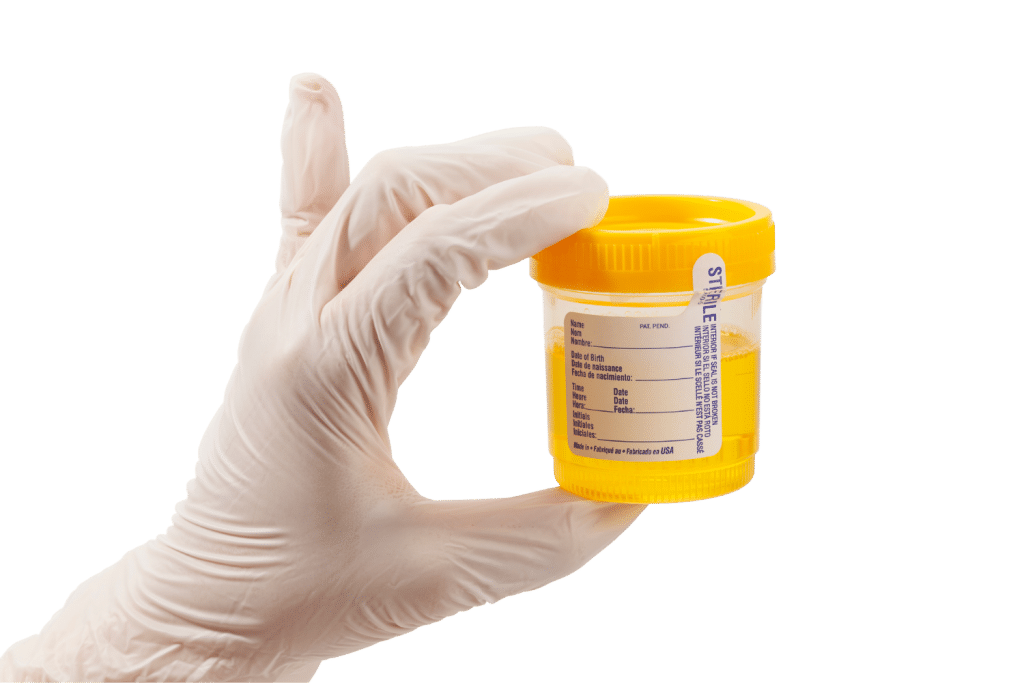
2. Saliva Testing
Detection window: Up to 24 hours.
Saliva testing is done using oral swabs. These tests are only considered effective for picking up ketamine within the first 24 hours. Some people report testing positive for ketamine on the first test but negative on subsequent saliva tests. The reliability of this test goes down significantly with each passing day, and saliva tests are very easily disputed in court.
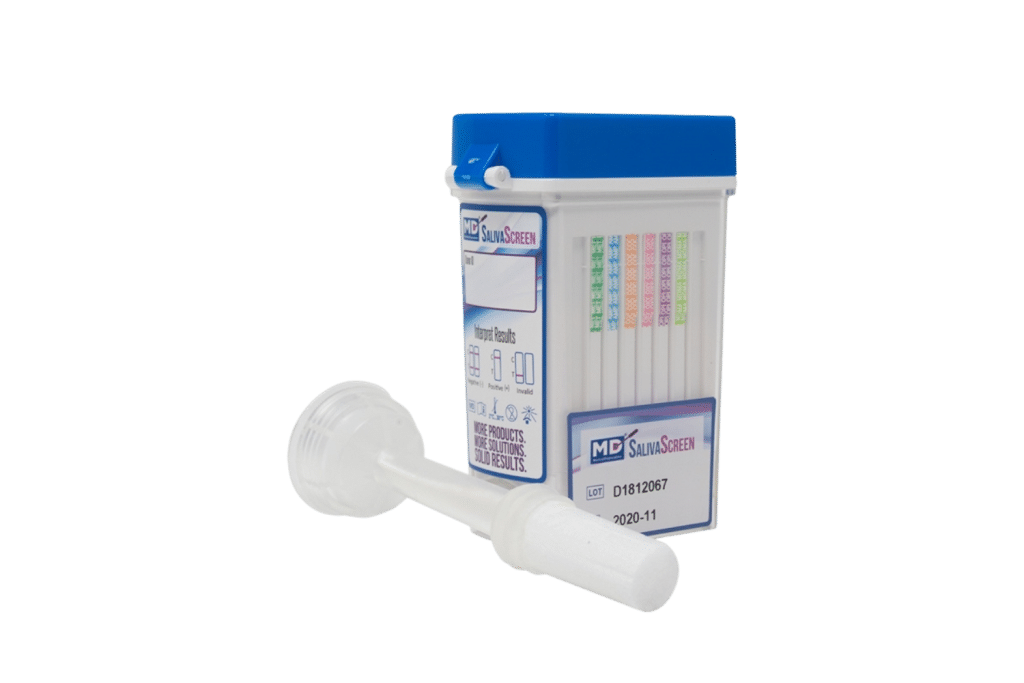
3. Blood Testing
Detection window: Up to 48 hours.
An employer probably won’t do a blood test, but some professional athletics commissions and law enforcement will use blood tests to search for drug use. These tests are much more expensive than saliva or urine tests and generally involve higher-grade equipment that can scan for many more types of drugs than your standard 12-panel drug test kit. If you’ve used ketamine within the past 24 hours, you’re very likely to fail the test. Between 24-48 hours, the tests seem to vary significantly depending on individual factors — some fail, some pass.
After 48 hours, the ability for blood tests to detect ketamine drops off significantly.
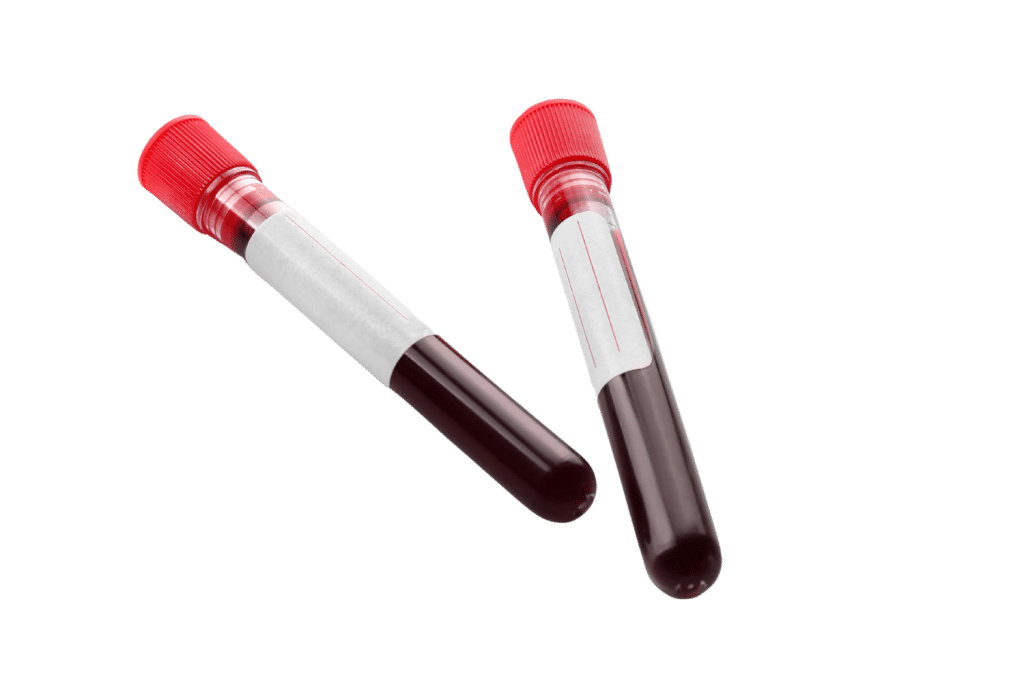
4. Hail Follicle & Fingernail Testing
Detection window: Up to 4 months.
Ketamine can be detected in hair and fingernails up to four months after use [2]. These tests have the longest detection window by a long shot, but there are a few catches.
For starters, hair and fingernail tests are better at detecting chronic use patterns than casual use. People who take ketamine every day are very likely to fail a test within four months of quitting. Those who take ketamine every now and then are unlikely to fail these tests.
The second catch is that hair and fingernail tests are widely considered inaccurate, and their results are often thrown out of court cases. For this reason, it’s very uncommon for employers or enforcement agencies to conduct hair or fingernail testing.
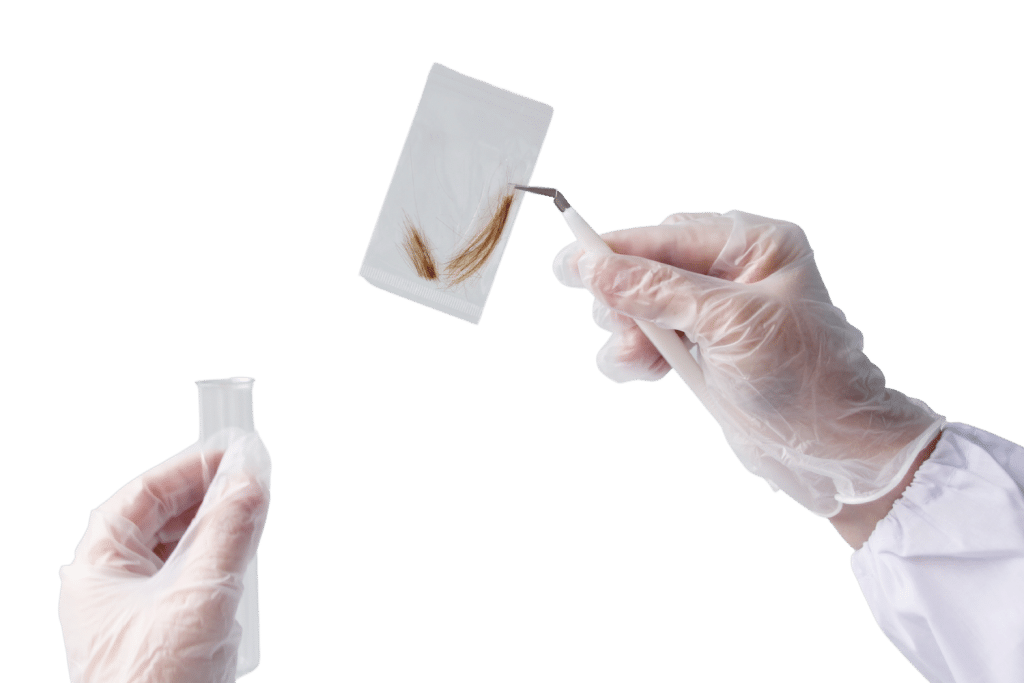
Factors That Determine How Long Ketamine Stays In Your System
What can you do to get ketamine out of your system quicker? Here are the things that impact how long it sticks around.
1. Frequency of Use
The frequency at which someone takes ketamine has a big influence on how long the drug stays in the body (the more often you take it, the longer it takes to clear from the body after quitting).
2. Dose & Format Used
The dose matters a lot, too. Higher doses take more time to eliminate below-detection thresholds. It’s not exactly linear, though — doubling the dose doesn’t double the elimination time, but may increase it by 25–50%.
3. Genetic Factors
Individual differences in liver metabolism make a big difference, too. Diseases like hepatitis or cirrhosis can influence this. Even without liver disease, every person’s liver metabolism is unique. Our genetic code controls the ratios of liver enzymes we produce. Each of these enzymes is responsible for dismantling different kinds of chemicals.
The CYP3A4 enzymes primarily metabolize ketamine — so people with deficiencies in this enzyme will clear ketamine from the body at a slower rate and have a longer detection window.
Likewise, those with very active CYP3A4 will eliminate it more quickly and have a shorter detection window.
4. Concomitant Drug Use
Certain drugs can affect the detection window of ketamine.
Many prescription medications also rely on the CYP3A4 isoenzymes to be processed and cleared by the body. This includes many blood pressure medications, statins, benzodiazepines, erectile dysfunction medications, antibiotics, and antifungal agents.
If a user is taking both ketamine and one or more of these medications, it can slow down the ability of this enzyme to do its job — thus lengthening the amount of time ketamine remains detectable.
5. Other Factors
The human body is highly complex. Factors like sex, age, weight, hydration levels, and exercise frequency can all influence the amount of time it takes to clear substances from the body.
People who drink lots of water will flush ketamine and its metabolites from the body more quickly, leading to shorter detection windows for both blood and urine tests.
Differences in sex can have an impact, too. Even hormone fluctuations at different stages of the menstrual cycle can impact drug metabolism in unpredictable ways.
Age is a big factor as well — older generations tend to metabolize drugs much more slowly than younger generations.
Ketamine Half-Life
The half-life of ketamine is about 2.5 hours.
Half-life refers to the amount of time it takes for exactly half of a substance to be eliminated from the bloodstream.
It usually takes between 4 and 6 half-lives for a drug to reach levels too low to be detected.
Each consecutive half-life cuts the amount of the remaining drug concentration in half.
Here’s an example:
- After one half-life, 50% of the drug remains.
- After two half-lives, 25% of the drug remains.
- After three half-lives, 12.5% of the drug remains.
- After four half-lives, 6.25% of the drug remains.
- After five half-lives, 3.125% of the drug remains.
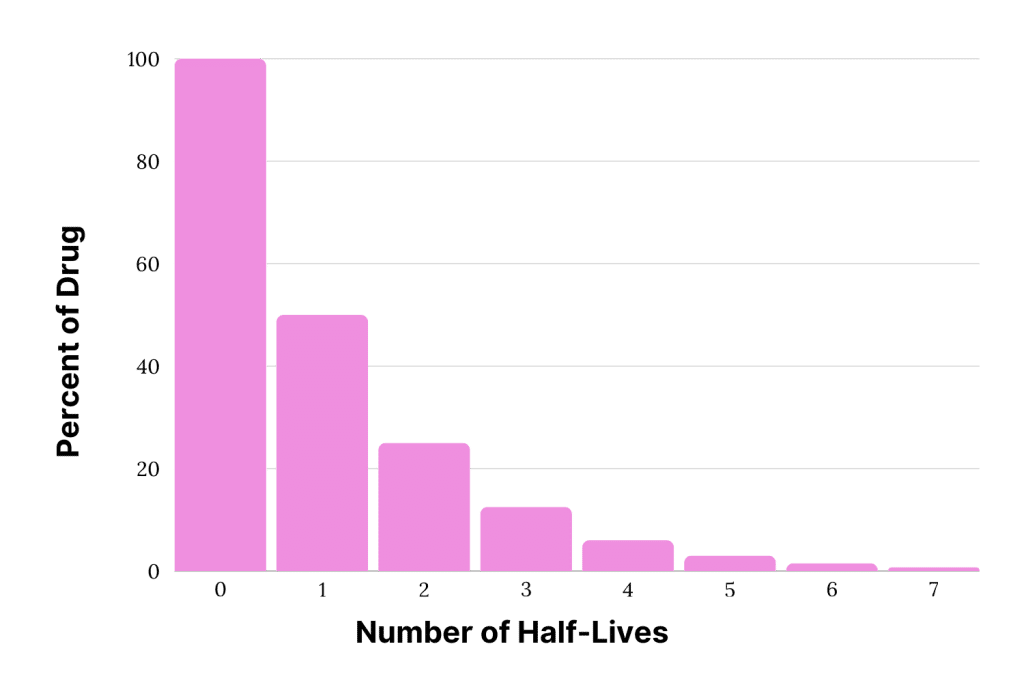
Let’s explore an example of what that looks like for insufflated (snorted) ketamine:
Let’s say someone used a recreational dose of about 20 mg of insufflated ketamine chrystals for this example.
Intranasal ketamine has an estimated bioavailability of 45%, so roughly 9 mg of ketamine enters the bloodstream [3]. It will take about 60 minutes for ketamine to reach peak blood concentrations.
From here, the total blood concentration of ketamine is cut in half every 2.5 hours.
We should see about 4.5 mg in the blood (first half-life complete) 3.5 hours after taking ketamine.
At 6 hours, just 2.25 mg (second half-life complete).
At 8.5 hours, 1.12 mg (third half-life complete).
By the fifth half-life — roughly 12–13 hours later — just 0.3 mg of the initial dose will remain.
By 25 hours, only 0.009 mg of ket remains in the blood, with the rest flushed out in the urine.
Even after it’s cleared from the bloodstream, ketamine metabolites remain in the urine until it’s completely flushed out. This is why one of the primary methods of improving one’s chances of passing a drug test is to drink plenty of fluids to urinate as often as possible.
Most standard drug tests won’t be able to detect trace amounts of ketamine in the blood, but there are ultra-sensitive tests out there that can measure nanograms (a nanogram is 0.000001 of a milligram) of ketamine in urine.
Tips for Increasing the Chance of Passing a Drug Test for Ketamine
Let’s assume you’re going to be given a test that actually does check for ketamine. What can you do to optimize your chances of going undetected?
Drug elimination follows 3 simple steps:
- Stop taking the drug immediately
- Increase the liver’s ability to metabolize ketamine
- Increase urine production and elimination from the body
1. Cease All Drug Use
Even with the most rigorous detox plans, you’re never going to eliminate the drug if you keep taking it. This goes without saying.
The more time you can put between your last dose and the test, the greater your odds of passing.
2. Increase Liver Metabolism
About 90% of the ketamine you take is metabolized by the liver before elimination. Therefore, it’s wise to stimulate the liver as much as possible so it clears a little quicker.
You can buy many different detox kits, as well as some simple herbal extracts that can help speed things up.
Herbal bitters are a traditional method for kickstarting this system and have been used for thousands of years as a medicine for sluggish liver activity.
Specific herbs that increase phase I, phase II, or both liver detox pathways include milk thistle (Silybum marianum), schizandra (Schizandra chinensis), dandelion (Taraxacum officinale), and globe artichoke (Cynara scolymus).
It’s also important to stop or reduce other supplements and medications that interfere with the CYP3A4 enzymes. This includes some foods and supplements, too, such as citrus fruits and especially grapefruit.
Do a quick search for the liver metabolism of any supplements you take to check.
3. Increase Urination
Once the liver metabolizes ketamine, it’s up to the kidneys to filter it out of the bloodstream.
The kidneys work most efficiently in a well-hydrated body, so the key to this step is to remain well-hydrated without going overboard. Too much water can be dangerous because it dilutes sodium and other electrolytes.
Drink water or tea often, but never exceed 0.5L per hour.
As more water goes into the bladder, you’ll naturally need to use the bathroom more often to clear it out — make sure you’re going often to clear any trace of ketamine from the body quickly.

Ketamine Drug Test FAQs
Here are some of the questions we’ve been asked since initially posting this article.
1. Can You Get a False Positive On a Ketamine Drug Test?
Yes, human and manufacturing errors can lead to false positives on drug tests.
Increasingly, ketamine is cut with other adulterants, which could also show colors on a drug test. You might take ketamine on the weekend and find out through a drug test that it contained opioids — virtually every drug test manufactured today checks for them. Make sure you test a sample of any substance before you take it. Fine white powders all look alike, and it’s impossible to distinguish different compounds using the naked eye.
There are also reports of people receiving intramuscular ketamine as anesthesia and later testing positive for phencyclidine (PCP). Such a result is noteworthy as many standard drug panels include PCP.
One paper recommends that “clinicians should inquire about ketamine usage in the presence of positive PCP results” [4].
Another study of patients in Taiwan showed a drug used to treat schizophrenia, quetiapine, gave a false positive for ketamine in urine tests [5].
Other research shows designer ketamine analogs (arylcyclohexylamines) showing up as PCP on drug tests [6].
Related: Foods to Avoid Before Taking a Drug Test
2. Are Ketamine Roadside Drug Tests a Thing?
Yes, law enforcement in some areas is now equipped with rapid oral fluid testing (ROFT) devices, like DrugWipe, some of which are capable of testing for ketamine with saliva and sweat.
When driving, many of us have given “implied consent,” which allows law enforcement suspicious of drug driving to test. How this works might depend on your jurisdiction, and many law firms specialize in DUIs.
The accuracy of rapid oral fluid testing is spotty, though. Some studies show variance between devices and substances [7].
3. Can I Do A Home Drug Test for Ketamine?
Yes. There is an abundance of drug test kits on Amazon, and user reviews suggest they often work pretty well. A quick search will reveal ketamine-specific tests.
Generally, these are urine test strips that people order for “peace of mind” before entering a scheduled drug test. Other times, they’re administered by parents to check if their kids have been taking illicit substances.
Take-home drug testing kits probably won’t be accepted in legal proceedings as they don’t adhere to the same quality of lab testing, which also can be contested.
4. Does the Military Test for Ketamine?
Yes. The military absolutely has the capabilities to test for ketamine, although a 2013 document suggests ketamine testing is done by special order.
Public resources and websites of attorneys defending those being court-marshaled do not generally mention ketamine as being part of standard screening.
Subscribe to Tripsitter: Newsletter & Podcast
Unlock Your Mind: Subscribe for Expert Insights on Psychedelics 🍄🌵
References
- Adamowicz, P., & Kala, M. (2005). Urinary excretion rates of ketamine and norketamine following therapeutic ketamine administration: method and detection window considerations. Journal of analytical toxicology, 29(5), 376-382.
- Xiang, P., Sun, Q., Shen, B., & Shen, M. (2011). Disposition of ketamine and norketamine in hair after a single dose. International Journal of Legal Medicine, 125, 831-840.
- Yanagihara, Y., Ohtani, M., Kariya, S., Uchino, K., Hiraishi, T., Ashizawa, N., … & Iga, T. (2003). Plasma concentration profiles of ketamine and norketamine after administration of various ketamine preparations to healthy Japanese volunteers. Biopharmaceutics & drug disposition, 24(1), 37-43.
- Moeller, K. E., Kissack, J. C., Atayee, R. S., & Lee, K. C. (2017, May). Clinical interpretation of urine drug tests: what clinicians need to know about urine drug screens. In Mayo Clinic Proceedings (Vol. 92, No. 5, pp. 774-796). Elsevier.
- Liu, C. H., Wang, H. Y., Shen, S. H., & Chiu, Y. W. (2017). False positive ketamine urine immunoassay screen result induced by quetiapine: A case report. Journal of the Formosan Medical Association, 116(9), 720-722.
- Skaugen, J. M., Scoccimarro, A., Pizon, A. F., Rymer, J. A., Giannoutsos, S., Ekins, S., … & Tamama, K. (2019). Novel ketamine analogues cause a false positive phencyclidine immunoassay. Annals of clinical biochemistry, 56(5), 598-607.
- Tang, M. H., Ching, C. K., Poon, S., Chan, S. S., Ng, W. Y., Lam, M., … & Mak, T. W. (2018). Evaluation of three rapid oral fluid test devices on the screening of multiple drugs of abuse including ketamine. Forensic science international, 286, 113-120.



